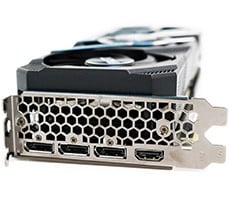Performance Summary and Conclusion
The New Thin - Ultrabooks Powered by 22nm CPUs - Intel's Ivy Bridge ULT Processor
 And so the stage is set. Intel has lowered price points for Ultrabooks to start at $699, though we're hopeful manufacturing partner execution to the bar that has been set is better achieved versus the first generation of UItrabooks. Remember that $999 price point? Too often it was exceeded and there are still scant few options beneath the $1K mark. Performance-per-watt, however, has once again been dramatically enhanced, with power consumption, size and thermal design performance optimized for even thinner, lighter and more stylish designs. With these key system level performance characteristics in hand, along with solid cost reductions, AMD's Trinity has some pretty stiff competition.
And so the stage is set. Intel has lowered price points for Ultrabooks to start at $699, though we're hopeful manufacturing partner execution to the bar that has been set is better achieved versus the first generation of UItrabooks. Remember that $999 price point? Too often it was exceeded and there are still scant few options beneath the $1K mark. Performance-per-watt, however, has once again been dramatically enhanced, with power consumption, size and thermal design performance optimized for even thinner, lighter and more stylish designs. With these key system level performance characteristics in hand, along with solid cost reductions, AMD's Trinity has some pretty stiff competition.In fact, for ultralight notebooks, we'd say it could very well be game, set and match for Intel with this design cycle. In more midrange multimedia-targeted notebooks, where graphics performance is more critical, Trinity-based machines could offer a price aggressive option in the market, though there will be a trade-off in CPU performance that will take careful marketing to convey at the retail level.
Regardless, though the landscape is quickly changing in the notebook arena, Intel appears to be ahead of the curve again, offering more power-efficient CPUs like the Core i5-3427U with leading-edge features like DX11 graphics, and video transcoding and encryption processing engines on board. When you stop to think what Intel's new Ultrabook architecture is capable of, considering its size and weight specifications, what the company has achieved is an unquestionable feat of design and manufacturing prowess that virtually no other company in the market can match currently.
 |
 |
|
|






